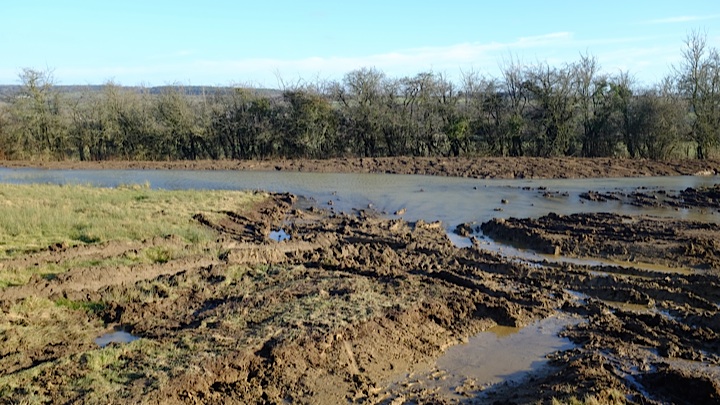

All is by no means lost for farmers whose fields are submerged during winter floods.
While a few days under water is unlikely to kill grass, any longer than a week can cause serious damage, especially if the grassland was old. Overseeding or reseeding will generally be necessary and results can be spectacular, as these powerful before and after shots demonstrate.
The Somerset Levels is an area that has historically been associated with problems of flooding and the deluges of 1995 had this overwhelming effect on the fields of one of our customers.
Flooded Grassland at Curry Moor, Somerset Levels, February 1995. These photographs were sent in over twenty years ago by our esteemed customer Mr House. It shows the overwhelming effect of flooding on grassland and how sowing seeds can help fix the problem when the water subsides. The photograph of dead grass and bare earth was taken in March. A month later in April the land was oversown with Westerwolds Ryegrass and just a few weeks later, by early June, it was lush and green and ready for turning into silage.
Overseeding is best done in spring and can be a good opportunity to rejuvenate old grasslands. Including deep-rooted species in the mix, such as red clover and alsike clover, Timothy and meadow fescue, traditionally associated with flood meadows, can also help in flood mitigation by helping to break up the soil and aid drainage. Heavy land versions of our diverse mixtures can be adapted to suit most soil types. Our technical advisers will willingly help you choose the best mixture for your particular situation and requirements.
Date Posted: 31st March 2017



